Intro
Identify heat rash in babies with symptoms like red bumps, itching, and prickly skin. Learn causes, treatment, and prevention methods for infant heat rash, also known as prickly heat or miliaria, to soothe and calm irritated baby skin.
Heat rash in babies is a common condition that occurs when the skin's sweat glands become blocked, causing inflammation and a rash. This condition is also known as prickly heat or miliaria. It is essential to recognize the symptoms of heat rash in babies to provide them with the necessary care and comfort. Heat rash can be uncomfortable and painful for babies, and if left untreated, it can lead to more severe complications.
Heat rash in babies is often caused by overheating, which can happen when they are dressed too warmly, left in a hot car, or exposed to high temperatures. Other factors that can contribute to the development of heat rash include humidity, sweating, and skin friction. Babies are more susceptible to heat rash because their sweat glands are still developing, and their skin is more sensitive. Recognizing the symptoms of heat rash in babies is crucial to prevent it from worsening and to provide them with the necessary treatment.
The symptoms of heat rash in babies can vary in severity, but common signs include small, red bumps or blisters on the skin, which can be itchy and painful. The rash can appear anywhere on the body, but it is more common in areas where the skin folds, such as the neck, armpits, and groin. In some cases, the rash can spread to other areas of the body, causing widespread discomfort and pain. It is essential to monitor the symptoms of heat rash in babies closely and seek medical attention if they worsen or if the baby shows signs of distress.
Causes of Heat Rash in Babies
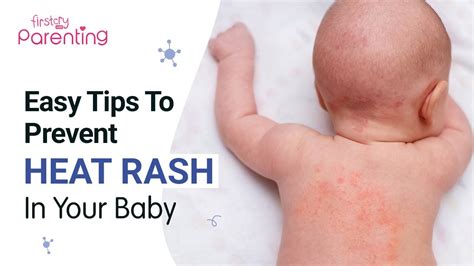
Types of Heat Rash
There are several types of heat rash, including miliaria crystallina, miliaria rubra, and miliaria profunda. Miliaria crystallina is the most common type of heat rash and is characterized by small, clear bumps on the skin. Miliaria rubra is a more severe type of heat rash, which is characterized by red, itchy bumps on the skin. Miliaria profunda is a rare but severe type of heat rash, which is characterized by large, painful bumps on the skin.Symptoms of Heat Rash in Babies
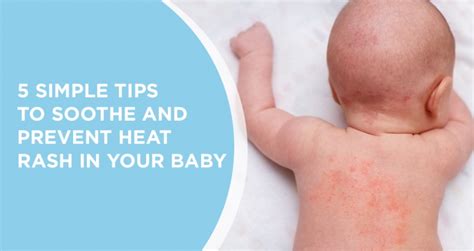
Treatment for Heat Rash in Babies
The treatment for heat rash in babies involves keeping them cool and comfortable. This can be achieved by: * Removing excess clothing and dressing them in light, loose clothing * Keeping them in a cool, well-ventilated area * Avoiding direct sunlight and heat * Using cool compresses or cool baths to reduce the body temperature * Applying topical creams or ointments to soothe the skin It is essential to consult with a healthcare professional before using any medication or treatment for heat rash in babies.Prevention of Heat Rash in Babies
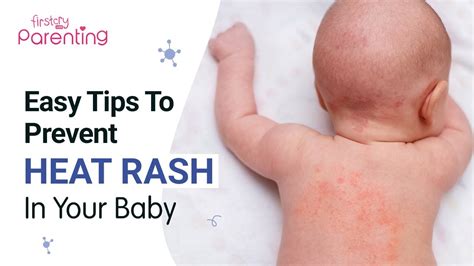
Complications of Heat Rash in Babies
If left untreated, heat rash in babies can lead to more severe complications, such as: * Infection, which can cause the rash to worsen and spread to other areas of the body * Dehydration, which can occur if the baby is not drinking enough fluids * Heat exhaustion, which can cause the baby's body temperature to rise, leading to more severe symptoms * Heat stroke, which is a life-threatening condition that requires immediate medical attention.Diagnosis of Heat Rash in Babies
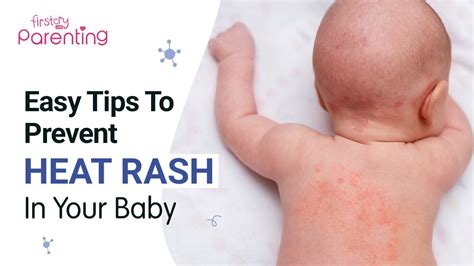
Treatment Options for Heat Rash in Babies
The treatment options for heat rash in babies depend on the severity of the condition. In mild cases, the baby may not need any treatment, and the rash may resolve on its own. In more severe cases, the healthcare professional may recommend topical creams or ointments to soothe the skin and reduce the risk of infection.Home Remedies for Heat Rash in Babies
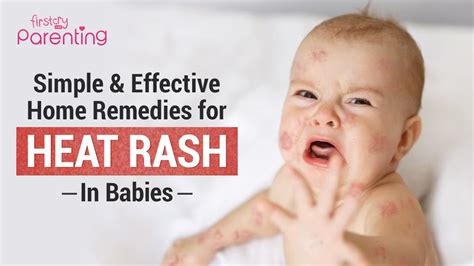
When to Seek Medical Attention
It is essential to seek medical attention if the baby's symptoms worsen or if they show signs of distress. Signs of distress can include: * Fever * Vomiting * Diarrhea * Refusal to feed * Irritability * Lethargy If the baby shows any of these signs, it is essential to seek medical attention immediately.What are the symptoms of heat rash in babies?
+The symptoms of heat rash in babies include small, red bumps or blisters on the skin, which can be itchy and painful. The rash can appear anywhere on the body, but it is more common in areas where the skin folds, such as the neck, armpits, and groin.
How can I prevent heat rash in my baby?
+Preventing heat rash in babies involves taking steps to keep them cool and comfortable. This can be achieved by dressing them in light, loose clothing, keeping them in a cool, well-ventilated area, and avoiding direct sunlight and heat.
What are the complications of heat rash in babies?
+If left untreated, heat rash in babies can lead to more severe complications, such as infection, dehydration, heat exhaustion, and heat stroke. It is essential to seek medical attention if the baby's symptoms worsen or if they show signs of distress.
We hope this article has provided you with valuable information about heat rash in babies. If you have any further questions or concerns, please do not hesitate to comment below. We would be happy to hear from you and provide you with more information and support. Additionally, if you found this article helpful, please share it with your friends and family to help spread awareness about heat rash in babies.
